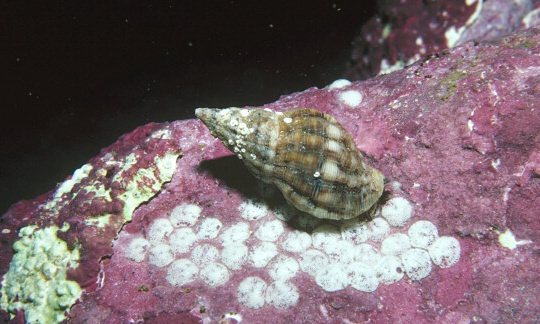The ancient shellfish, once used as a main source of Tyrian purple by the Phoenicians, has disappeared from the eastern Mediterranean coast, amid warnings of an ongoing multi-species collapse, a recent study* published in The Guardian confirmed.
The collapse, blamed on several factors that include rising temperatures in the Levant region, pollution, and bioinvasion, has thus far claimed 38 of 59 molluscan species including the red-mouthed rock shell –one of few other species of shellfish that was used in the production of the Tyrian dye.

Tyrian dye takes its name from the southern Lebanese city of Tyre, where the production of the color purple was most prominent during antiquity. According to Phoenician mythology, the discovery of the color was credited to the pet dog of Tyros, the sea nymph mistress of the God of Tyre, Melqart (often titled Ba’l Ṣūr, “Lord of Tyre”). The legend goes that the couple were walking along the beach when they noticed that after biting on a washed up mollusc the dog’s mouth was stained purple. Tyros asked for a garment made of the same color and so began the famous dying industry.

The whelk was once among the most storied and valuable trading products during the time of antiquity, and is credited with giving the Phoenicians their name (Phoinix in Greek means purple). The ancient people called themselves the Canaanites, which in the Semitic Akkadian language meant purple people (kinahhu). The dyes were extremely valuable since thousands of shells were used to produce a single kilo of the much coveted color. The purple stained garments brought the Phoenicians fame throughout the ancient world.
Though Lebanon (home of the ancient Phoenicians) is no longer “purple”, and has been renamed after its white, snow-capped peaks, does this mean that the country will once again change both name and color once climate change has run its course? We don’t seem to be resisting that imminent change -not by policy, nor by habit.
*The study was conducted by Israeli marine biologist Gil Rilov, who surveyed the Israeli-Palestinian coast from north to south, and was published in Nature.com. Results from Cyprus and Crete were also used for comparison. This survey confirms other recent research describing the risk of sharply rising sea temperatures in the eastern Mediterranean basin. You can read the extensive study here. Though (naturally) this study does not include the Lebanese coast, the effects of rising temperatures are not limited to borders. These findings should trigger a local survey and consequent conservation efforts. The Lebanese government recently endorsed a deep sea expedition that found several unexpected species (many of which are invasive) some 1050 meters deep. Seashells normally live in shallow waters, which as mentioned have yet to be properly surveyed.
Related: Rare species found off Lebanon coast could trigger conservation efforts


